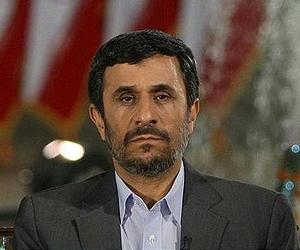| . | Iran to launch several satellites: Ahmadinejad
The president's remarks coincide with celebrations of the 32nd anniversary of Iran's 1979 Islamic revolution that falls on February 11. Every year Iran uses the run-up to the anniversary to trumpet its scientific, technological and military achievements. Iran's missile and space programmes have sparked concern abroad that such advanced technologies, combined with the nuclear know-how which the nation is acquiring, may enable Tehran to produce an atomic weapon. Tehran denies its nuclear programme has military aims. Iran unveiled on Monday what it said were prototypes of four new home-built satellites -- Rasad (Observation), Fajr (Dawn), Zafar (Victory) and Amir Kabir-1 and also the engines of a Safir-B1 (Ambassador-B1) rocket, reports said. The country does not have an operational satellite of its own but Defence Minister Ahmad Vahidi announced in December that two satellites, Fajr and Rasad-1, would be launched by the end of the current Iranian year to March 20. But on Sunday, Vahidi said a launch date for Fajr and Rasad-1 was "not fixed" yet, indicating their launch would likely be delayed. Iran in February 2009 sent into space its first home-built test satellite Omid (Hope) carried by a Safir-2 rocket. Twelve months later, it launched a capsule carrying live turtles, rats and worms aboard a Kavoshgar-3 (Explorer-3) rocket in what was Iran's first experiment to send living creatures into space. Ahmadinejad repeated previous pronouncements that Tehran aims to send an Iranian into space by 2020. "The aim of sending a man into space by 2020 can be achieved ... and before this we can send robots or other things," he said. State television later showed him unveiling what was a space capsule intended to be launched by a future Iranian rocket Kavoshgar-4 carrying a monkey. "Sending this is the first step towards sending a man into space," state news agency IRNA quoted Hamid Fazeli, the head of the Iranian Space Organisation, as saying. Fajr, which was unveiled on Monday, is a reconnaissance satellite constructed by the defence ministry, while Amir Kabir-1, details of which were unavailable, is built by Tehran's Amir Kabir university. Rasad is constructed by Malek Ashtar University of Tehran which is linked to Iran's elite military force, the Revolutionary Guards, while details of Zafar were unavailable. Iranian media reports said last week that the Safir-B1 rocket can carry a satellite weighing 50 kilograms (110 pounds) into an elliptical orbit of 300 to 450 kilometres (185 to 280 miles). Iran on Sunday opened its first centre to receive satellite images, a new stage in its space programme and the equipment for which it says have been manufactured locally. Share This Article With Planet Earth Related LinksMilitary Space News at SpaceWar.com  China's hostile space capabilities worry US: officialWashington (AFP) Feb 4, 2011China is developing "counterspace" weapons that could shoot down satellites or jam signals, a Pentagon official said Friday as the United States unveiled a 10-year strategy for security in space. "The investment China is putting into counterspace capabilities is a matter of concern to us," deputy secretary of defense for space policy Gregory Schulte told reporters as the defense and intellig ... read more China's hostile space capabilities worry US: officialWashington (AFP) Feb 4, 2011China is developing "counterspace" weapons that could shoot down satellites or jam signals, a Pentagon official said Friday as the United States unveiled a 10-year strategy for security in space. "The investment China is putting into counterspace capabilities is a matter of concern to us," deputy secretary of defense for space policy Gregory Schulte told reporters as the defense and intellig ... read more | . |
|
Tuesday, February 8, 2011
Iran to launch several satellites: Space Daily
Subscribe to:
Post Comments (Atom)



No comments:
Post a Comment